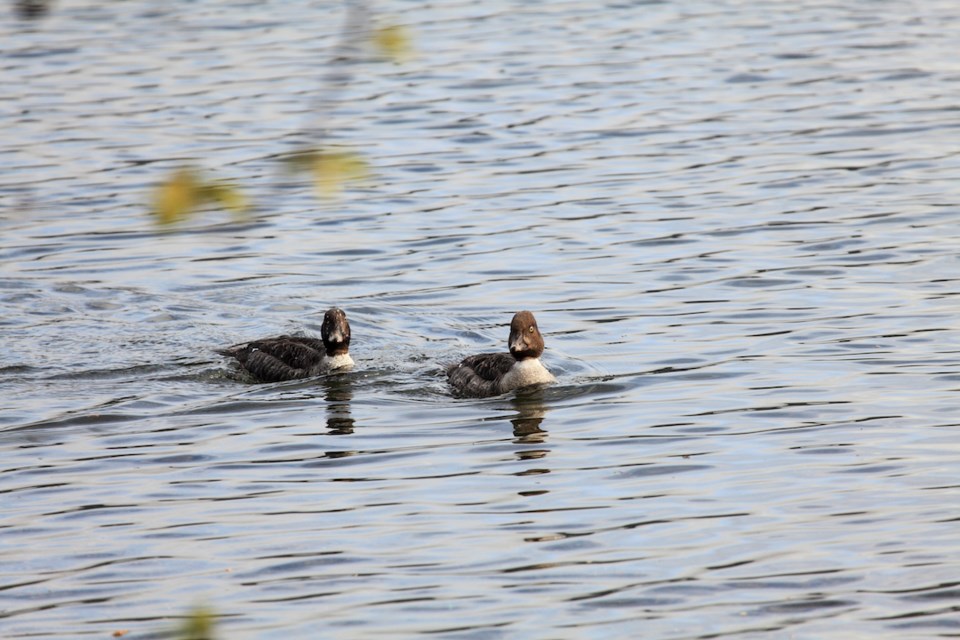October is a classic transitional month in the birdlife of the Sunshine Coast. In the first half of the month, the final few individuals of our summering wood warblers are recorded, and in the last 10 days, the first wintering ducks appear. Meanwhile, the geese flocks are flying overhead, sparrow are moving southward, and miscellaneous other species put in predictable appearances.
Two of our most abundant wintering ducks, Barrow’s goldeneye and bufflehead, both appeared on Oct. 21, a typical date for these species to return to the Coast after summering and breeding on lakes east of the Coast Range. Wintering waterbird populations of more than 20 species of ducks, loons, grebes, and swans, will increase through November as interior lakes freeze over and the birds beat a retreat to the balmy, ice-free climate of the Salish Sea.
Geese flocks were reported overhead from the last week of September through the third week of October, with possibly more to come. Four species of geese are involved (Canada, cackling, white-fronted and snow). Most of the flocks fly over the Sunshine Coast as they head for the Fraser Delta, but a few stray birds often touch down here and sometimes stay with us all winter. In recent days, all four species have been visible on the playing fields on Park Road in Gibsons.
Western meadowlarks are summer visitors to the interior grasslands of B.C. and winter largely in the U.S. A tiny migratory movement in both spring and fall passes through the Sunshine Coast with individual birds found in open grassy areas such as sports fields, Gospel Rock and foreshore locations such as Mission Point, the Wilson Creek estuary and the Roberts Creek jetty. Meadowlarks are conspicuous with their yellow breast and white outer tail feathers. The total recorded fall migration amounts to fewer than 10 birds. Mourning doves have a similar seasonal distribution to meadowlarks, with an even smaller occurrence on the Sunshine Coast. This fall, two birds have been reported at Ruby Lake and Gospel Rock.
Dippers are present on the Sunshine Coast all year but move upstream to spend the summer and raise their young. The estuary and creek immediately upstream of the bridge at Roberts Creek host dippers every winter and the first report was on Oct. 17 by Karen Holland. All other local estuaries may host wintertime dippers. Dippers have the most wonderfully exuberant bubbling song that seems to be in perfect synchrony with their watery habitat.
A California scrub-jay that was first reported in July has reappeared and is frequenting feeders in Selma Park. This is a rare bird in B.C. and only the second occurrence on the Sunshine Coast with the last in 2009.
To report your sightings or questions contact [email protected] or 604-885-5539. Good Birding.




